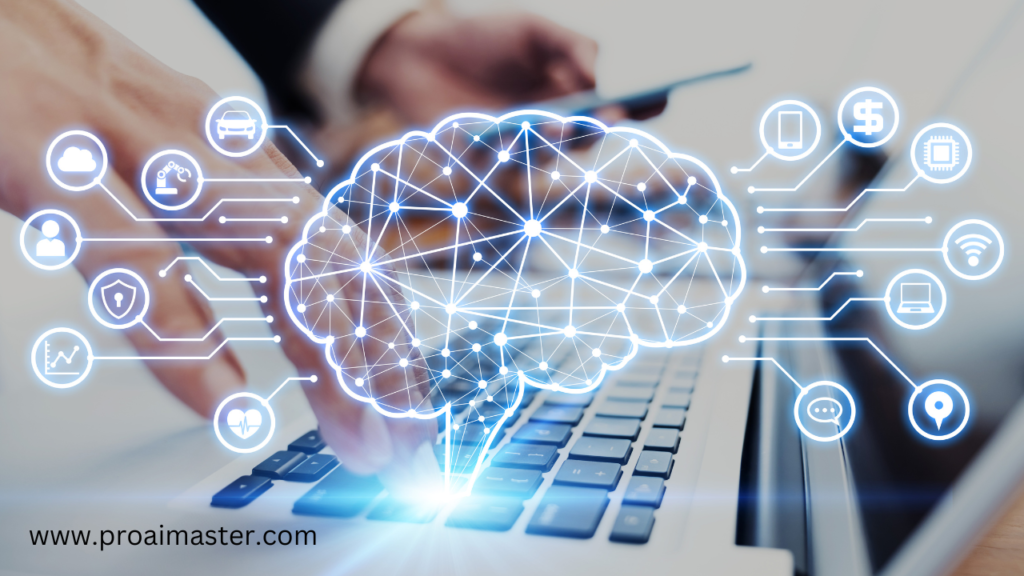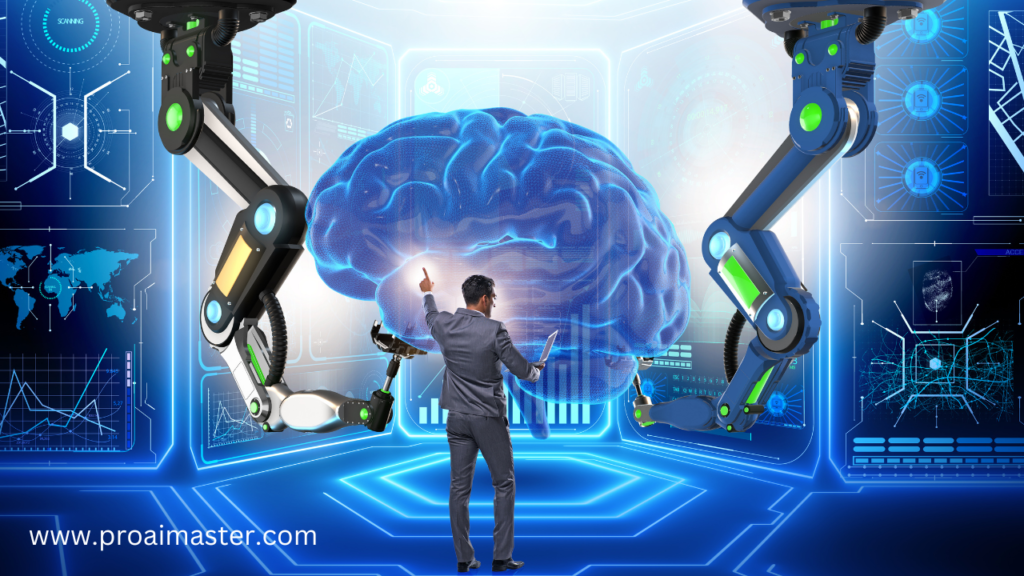How to Run Auto-GPT and Automate Your Tasks Step By Step In 2023? In today’s fast-paced digital world, automation has become a crucial aspect of enhancing productivity and efficiency.
With the advancements in artificial intelligence (AI) and natural language processing (NLP), automation tools like Auto-GPT have emerged, allowing individuals and businesses to streamline their tasks and save valuable time. This article will guide you through the process of running Auto-GPT and harnessing its power to automate various tasks, thereby maximizing productivity.
Understanding Auto-GPT: Revolutionizing Automation

What is Auto-GPT?
Auto-GPT is an advanced language model powered by AI and developed by OpenAI. It builds upon the GPT-3.5 architecture, which stands for Generative Pre-trained Transformer, and employs deep learning techniques to understand and generate human-like text.
Auto-GPT can be used to automate a wide range of tasks, including content generation, customer support, data analysis, and more.
The Benefits of Auto-GPT
By utilizing Auto-GPT, you can reap numerous benefits, such as:
- Increased productivity: Automating repetitive tasks frees up valuable time, allowing you to focus on more critical aspects of your work.
- Consistent output: Auto-GPT generates content with remarkable accuracy, ensuring consistent quality across multiple iterations.
- Cost-effectiveness: Automating tasks eliminates the need for manual labor, reducing costs associated with human resources.
- Scalability: Auto-GPT can handle large volumes of data and scale its automation capabilities to meet your needs.
Getting Started with Auto-GPT
Accessing Auto-GPT
To run Auto-GPT, you can access it through OpenAI’s platform or use their API to integrate it into your own applications. OpenAI provides comprehensive documentation and resources to assist users in implementing Auto-GPT effectively.
Setting Up Your Environment
Before running Auto-GPT, ensure that you have the necessary infrastructure in place. This includes a computer with a stable internet connection and the required software dependencies. OpenAI provides clear guidelines for setting up the environment, making the process seamless.
Running Auto-GPT: Step-by-Step Guide

Defining Your Task
To automate a specific task using Auto-GPT, you need to define the objective clearly. Determine the input and output formats, desired behavior, and any specific instructions or constraints necessary for the task.
Preparing the Data
For Auto-GPT to understand and generate meaningful output, you need to prepare the data appropriately. This may involve cleaning and structuring the input data, creating training examples, and specifying the desired format for the output.
Training Auto-GPT
Training Auto-GPT involves exposing it to relevant data and fine-tuning it to perform the desired task accurately.
This process may require some experimentation and iteration to achieve optimal results. OpenAI provides comprehensive training guides and resources to help you effectively train your models.
Testing and Validation
Once trained, it is essential to thoroughly test and validate your Auto-GPT model. Verify that it produces accurate and relevant output for a variety of inputs and scenarios. This step ensures that your automated system functions reliably.
Real-Life Applications of Auto-GPT

Content Generation and Copywriting
Auto-GPT can automate content creation tasks such as writing articles, blog posts, social media captions, and product descriptions. By providing the necessary prompts and instructions, you can generate high-quality content in a fraction of the time.
Customer Support and Chatbots
Automating customer support using Auto-GPT allows businesses to provide quick and accurate responses to customer queries. Chatbots powered by Auto-GPT can handle common inquiries, resolve issues, and assist customers with minimal human intervention.
Data Analysis and Insights
Auto-GPT can be employed to automate data analysis tasks, such as processing and summarizing large datasets, generating insights, and creating reports. By automating these processes, you can gain valuable insights in a fraction of the time it would take to perform manually.
Best Practices for Running Auto-GPT
Data Privacy and Security
When running Auto-GPT, it is crucial to handle sensitive data with care. Ensure that you comply with data privacy regulations and implement appropriate security measures to protect user information.
Regular Model Updates and Maintenance
To ensure optimal performance, it is recommended to periodically update and retrain your Auto-GPT models. Stay up to date with the latest advancements in AI and NLP and incorporate them into your automation workflows.
Monitoring and Quality Assurance
Automated systems should be regularly monitored to identify and resolve any issues or errors. Implement quality assurance processes to maintain the accuracy and reliability of your automated tasks.
Customization and Fine-tuning

Task-Specific Models
Auto-GPT allows for customization and fine-tuning to cater to specific tasks or industries. By training the model on domain-specific data, you can enhance its understanding and generate more relevant outputs.
This customization ensures that Auto-GPT aligns with your unique requirements and produces optimal results.
Hyperparameter Optimization
During the training process, you can experiment with different hyperparameters to fine-tune the performance of Auto-GPT.
Adjusting parameters such as learning rate, batch size, and sequence length can significantly impact the model’s accuracy and efficiency.
Collaboration and Integration
Collaborative Automation
Auto-GPT can facilitate collaborative automation, enabling multiple individuals or teams to work together seamlessly.
By sharing and integrating automated tasks, you can distribute workload, improve coordination, and achieve greater efficiency in accomplishing complex projects.
Integration with Existing Systems
Integrating Auto-GPT with existing systems and tools can further streamline automation workflows.
By connecting Auto-GPT to APIs, databases, or workflow management platforms, you can automate data retrieval, perform complex analyses, and generate valuable insights within your established infrastructure.
Continuous Learning and Feedback
Feedback Loop
Establishing a feedback loop is essential for improving the performance of your Auto-GPT models. Encourage users or stakeholders to provide feedback on the generated outputs, allowing you to identify areas for improvement and refine the model’s behavior.
Continuous Training
To adapt to evolving requirements and changing data patterns, it is crucial to continuously train and update your Auto-GPT models. By regularly incorporating new data and retraining the models, you can ensure that they stay up to date and maintain their accuracy over time.
Ethical Considerations
Bias and Fairness
When training and using Auto-GPT, it is crucial to be aware of potential biases and ensure fairness in its outputs. Care should be taken to avoid perpetuating stereotypes or generating discriminatory content.
Implementing measures such as diverse training data and bias mitigation techniques can help address these concerns.
Transparency and Explainability
Auto-GPT’s automation capabilities should be transparent and explainable. Understand the decision-making process of the model and provide clear explanations when interacting with users.
This transparency builds trust and allows users to understand how and why certain outputs are generated.
Future Developments and Advancements

OpenAI’s Research and Updates
As technology advances, OpenAI continues to research and develop new iterations and updates for Auto-GPT. Stay informed about the latest developments, advancements, and best practices shared by OpenAI to leverage the full potential of Auto-GPT.
Integration of Multi-modal Capabilities
Future versions of Auto-GPT may incorporate multi-modal capabilities, allowing it to process and generate outputs based on different data types, such as text, images, and videos. This integration opens up new possibilities for automating tasks that require a combination of modalities.
Conclusion
Automation using Auto-GPT has the potential to revolutionize the way we approach tasks and enhance productivity. By understanding how to run Auto-GPT and harness its capabilities, individuals and businesses can automate a wide range of tasks, from content generation to customer support and data analysis.
With proper planning, training, and validation, Auto-GPT can become an invaluable tool in streamlining workflows, saving time, and achieving consistent and accurate results. Embrace the power of Auto-GPT and unlock a new era of automation in your daily tasks.
FAQs
What is Auto-GPT?
Auto-GPT is an advanced language model developed by OpenAI. It utilizes artificial intelligence and natural language processing techniques to automate various tasks by generating human-like text.
How does Auto-GPT help automate tasks?
Auto-GPT automates tasks by understanding input prompts and generating relevant output based on its training and fine-tuning. It can be trained on specific data to cater to different tasks, such as content generation, customer support, data analysis, and more.
How do I access and run Auto-GPT?
You can access Auto-GPT through OpenAI’s platform or use their API to integrate it into your own applications. OpenAI provides documentation and resources to guide users in implementing and running Auto-GPT effectively.
What are the benefits of using Auto-GPT?
Using Auto-GPT offers several benefits, including increased productivity by automating repetitive tasks, consistent output quality, cost-effectiveness by reducing manual labor, and scalability to handle large volumes of data.
Can I customize Auto-GPT for specific tasks?
Yes, Auto-GPT can be customized and fine-tuned for specific tasks. By training the model on domain-specific data and adjusting hyperparameters, you can enhance its performance and generate more relevant outputs.
How do I validate the accuracy of Auto-GPT’s output?
To validate Auto-GPT’s output, thorough testing and validation are essential. Test the model with various inputs and scenarios, ensuring the accuracy and relevance of the generated output. Iterative refinement and feedback loops can help improve the model’s performance.
What are some real-life applications of Auto-GPT?
Auto-GPT has diverse applications, including content generation and copywriting, customer support and chatbots, data analysis and insights, and much more. It can automate tasks in various industries, improving efficiency and productivity.
Are there any ethical considerations when using Auto-GPT?
Yes, ethical considerations are important when using Auto-GPT. Avoid biases in training data, ensure fairness in generated outputs, and maintain transparency and explainability in the decision-making process of the model.
How can I keep my Auto-GPT models up to date?
To keep your Auto-GPT models up to date, continuously train and update them with new data. Stay informed about the latest research and updates from OpenAI to incorporate advancements and best practices.
What does the future hold for Auto-GPT?
The future of Auto-GPT involves advancements such as multi-modal capabilities, allowing the model to process and generate outputs based on various data types. OpenAI’s ongoing research and development will continue to shape the capabilities and potential of Auto-GPT.

Muhammad Ahmad is a dedicated writer with 5+ years of experience delivering engaging and impactful content. He specializes in simplifying complex topics into easy-to-read articles.


